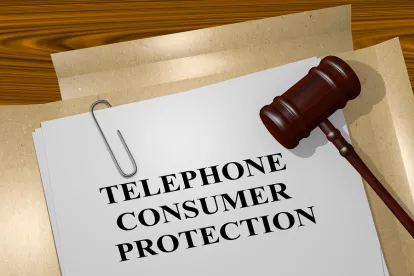Happy Halloween folks!
I hate to be the bearer of bad news. We definitely did not see this one coming when we predicted here at TCPAland that courts within the 7th Circuit will likely ignore Marks, and adopt Pinkus post-Marks. Yesterday’s, the Western District Court of Wisconsin, in denying Defendant Charter Communication’s motion to dismiss, applied the definition of an ATDS implemented by FCC’s 2003 order and outright rejected the rationale in Pinkus.
In Mitchell Maes v. Charter Communication, District Judge James D. Peterson ruled that ACA In’l did not invalidate the FCC’s 2003 definition of an ATDS, finding that Plaintiff plausibly alleged the use of an ATDS by alleging that Defendant used a predictive dialer to call Plaintiff.
In so ruling, the Maes court first observes that though ACA Int’l found that the FCC’s definition of an ATDS in its 2015 order was contradictory, ACA Int’l did not reject previous orders:
“What ACA International did was to reject the FCC’s have-your-cake-and-eat-it-too approach to the questions before it . . . but what ACA International did not do is endorse one interpretation over the other, even implicitly.”
Quoting (bad) Reyes v. BCA Financial Services, Inc., 312 F. Supp. 3d. 1308, 1321–22 (S.D. Fla. 2018).
So, the Maes court had authority to impose its own interpretation of the TCPA.
The court goes on to reject Defendant’s argument that the court should follow Pinkus v. Sirius – finding Pinkus unpersuasive because it overstates the ACA Int’l holding:
“It overstates the holding of ACA International when it says that the “D.C. Circuit overturned the FCC’s decision in the 2015 Declaratory Ruling to ‘reaffirm[] . . . the notion that a device can be considered an autodialer even if it has no capacity itself to generate random or sequential numbers […] The text that Pinkus quotes from is not the holding. It is one example from a list of examples of inconsistencies found in the 2015 order. See ACA Int’l, 885 F.3d at 702. Again, the holding was not that a particular definition was wrong, but that the 2015 order contradicted itself.”
The Maes court further asserts that Pinkus was incorrect that the 2003 order was invalid because it has the same flaws as the 2015 order. “Although the 2003 order recognized that there were two types of predictive dialers, it ruled that both types fell under the definition of autodialer. ACA Int’l, 885 F.3d at 702. In the 2015 order, the FCC added rules that seemingly excluded one of these types, while at the same time reaffirming that the 2003 ruling was valid. So the flaw in the 2015 ruling was that it added a new regulation that made it unlike the 2003 order.”
And the Maes court doesn’t stop there.
The Maes court then rejects Defendant’s argument that ACA Int’l must have ruled on the 2003 and 2005 order because the appellate court ruled that it had jurisdiction to review it. Noting that the Marks court also adopted this position, the Maes court states that the discussion of jurisdiction in ACA Int’l is ambiguous and even if ACA Int’l invoked jurisdiction to review the 2003 order, it only discussed the contents of the order and did not actually review it.
Further, the Maes court was unconvinced by Defendant’s argument that the FCC will soon implement rules that define an ATDS more restrictively, stating that there is no authority that provides the FCC with power to invalidate a rule in the context of a request for comment, and regardless “what the FCC does in the future, this court must apply the law as it exists today.”
To drive its point home, the court concludes that even if it found that the 2003 ruling was invalid, it was unsure if it would adopt Defendant’s definition of an ATDS. “For example, inMarks, the court concluded that the 2003 ruling on predictive dialers was no longer valid, but the court’s construction of the statutory definition of autodialer was essentially the same as the definition found in the FCC’s 2003 order. Marks, 904 F.3d at 1051 (holding that under the statutory language, equipment can qualify as an autodialer even if it does not have the capacity to generate random or sequential numbers).”



 />i
/>i

